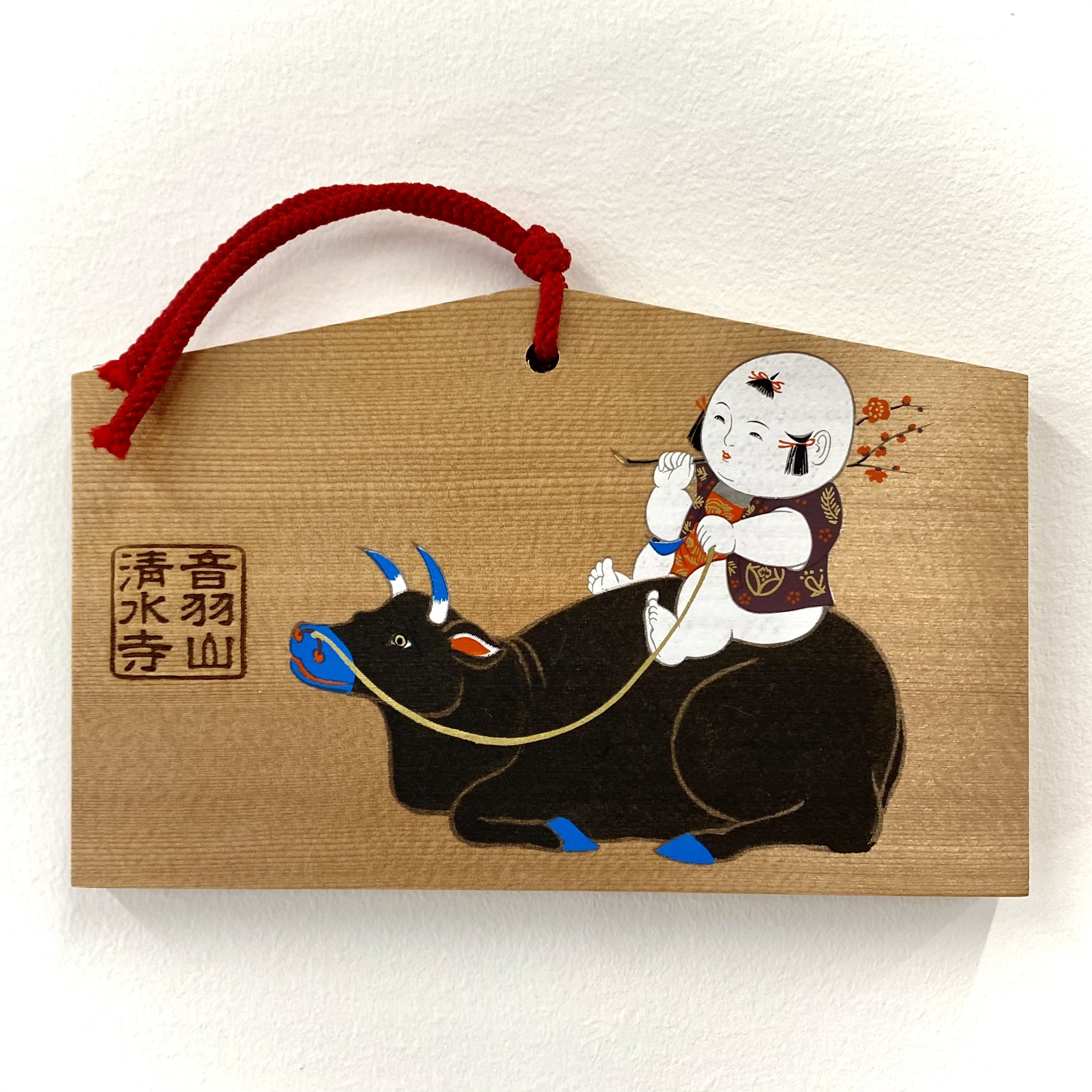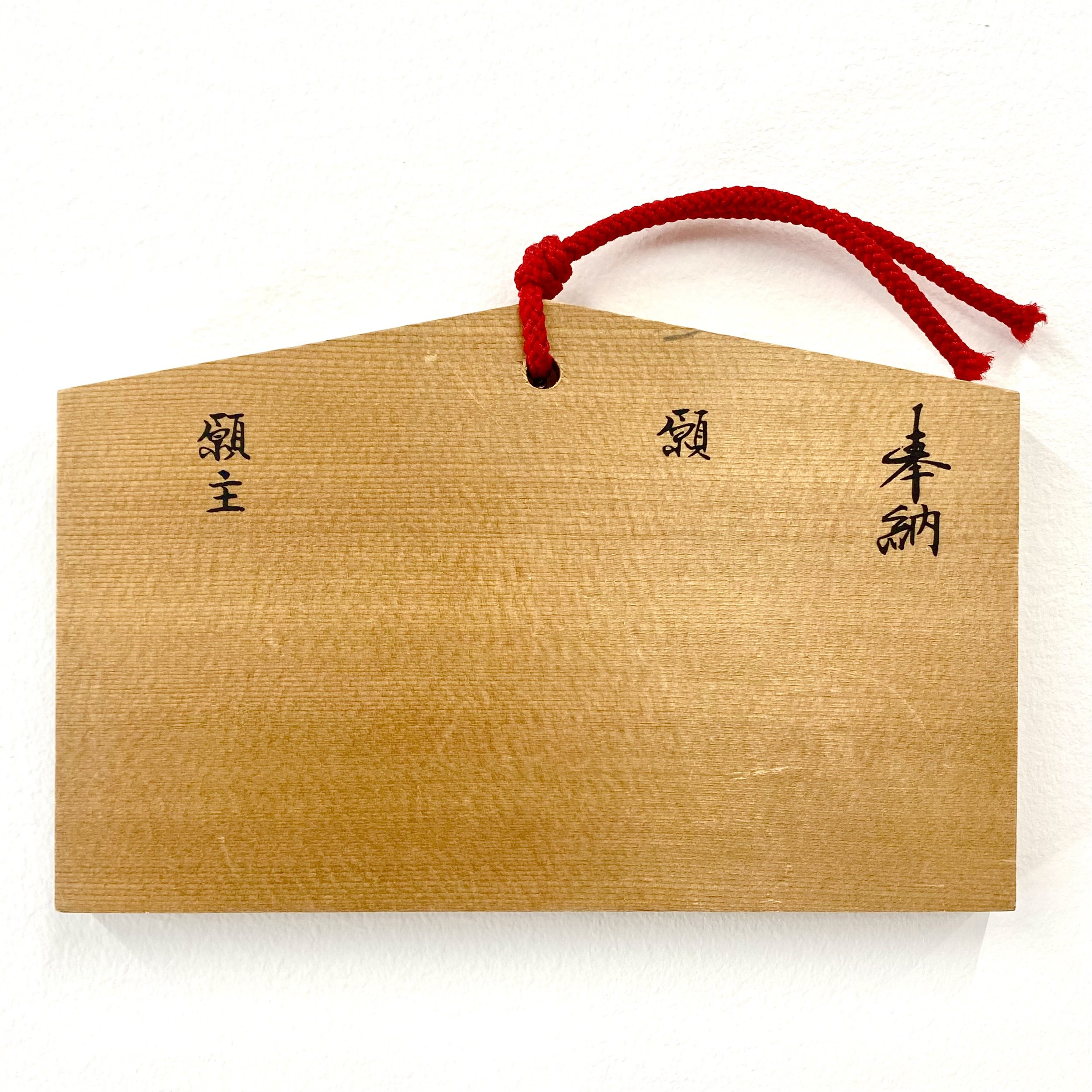Ema
A cheerful ema depicting a child astride an ox. These small wooden plaques are purchased (sometimes specifically-commissioned) by visitors to Shinto or Buddhist shrines. Priests will write the prayers or desires of the supplicant on the ema, then hang it on the shrine with countless others, for the kami (spirits) to receive. The ema are eventually burned in a special ceremony, and the process begins anew. Marked “Kiyone Nagaha Terayama” on the front, and “May the Lord … willing” on the reverse. Sugi or hinoki cypress, with a polychrome painted image. Approximately four inches tall by six inches wide.
The word ema (絵馬) literally means “picture-horse.” Horses were thought to be especially dear to the kami, and the donation of a horse to a temple or shrine would be sure to get your message to the gods. However, since horses were (and are) very expensive, people began to offer horses made from clay, wood, or paper instead. Eventually, it became acceptable to the gods to receive a picture of a horse, drawn on a piece of wood. From there, it wasn’t much of a leap to just draw the thing you wanted (or didn’t want) on a piece of wood, and skip the horse part.
in Zen Buddhism (Chán in China), oxen or bulls are sometimes used to represent the struggle for enlightenment. A series of vignettes called “Ten Bulls” or “Ten Ox Herding Pictures” help to illustrate the stages of a practitioner's progress toward enlightenment. We think perhaps this ema depicts stage seven, described here by 12th century Chinese Chán master Kuòān Shīyuǎn:
“Astride the Ox, I reach home.
I am serene. The Ox too can rest.
The dawn has come. In blissful repose,
Within my thatched dwelling
I have abandoned the whip and ropes.”

